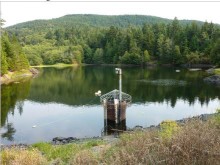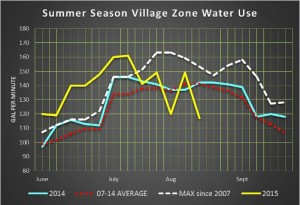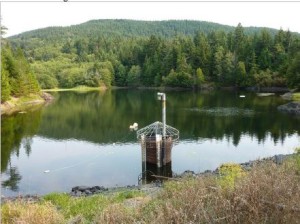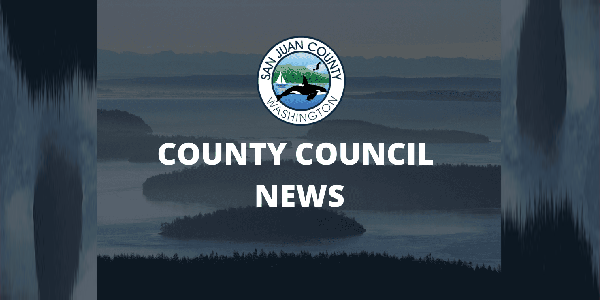— from Paul Kamin —
UPDATE HIGHLIGHTS:
1. August Water Demand Trend
2. Purdue Reservoir Water Level
3. What’s happening elsewhere in the State?
4. Cliff Mass Orcas Island Lecture “Why is the NW so WARM”
5. EWUA launching a pilot study of new water meters to improve leak detection.
Tracking Summer Water Demand
The last 3 weeks of EWUA water use has seen remarkable fluctuation. The week to week variation was 25%. This was almost certainly due to the intermittent “cooler and cloudier” periods we have seen in the last several weeks. The water system is in a “good place”. In this context, “good place” means that the efforts members are continuing to make to be mindful of their water use are having the intended consequence. EWUA believes we are in a sustainable situation. This is not to suggest that we can let our guard down. It would be unwise to return to the early summer pattern of high water use.
Elsewhere in the Region: The 3 large water systems serving Seattle, Tacoma, Everett and most communities in between have issued new water warnings. Their reservoirs are drawing down more rapidly than normal. There is also growing concern about the potential that winter recharge will be reduced due to the effects of El Nino. Earlier in July these large water providers requested members reduce their water use. Their water managers concerns have been increasing and they have now issued a request that all customers cut back their water use by 10%.
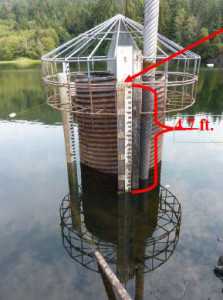 This is a full lake. At 20’ water overflows into this corrugated pipe and then into Raccoon Creek. Purdue is usually at 20’ between Nov and May.
This is a full lake. At 20’ water overflows into this corrugated pipe and then into Raccoon Creek. Purdue is usually at 20’ between Nov and May.
So far this summer drawdown at Purdue Lake has been 4.7 ft. This summer’s drawdown has been about 1.2 ft more than the 20 year average, or about 25% ahead of normal.
Lower water levels, and higher temperatures increase the potential for unwelcome algae blooms. This has not been a problem at Purdue but has been elsewhere in the state. Algae blooms can wreak havoc in water treatment plants. We are working the State DOH to test the lake for “precursors” to algae blooms.
Cliff Mass coming to Orcas Aug 20th
Eastsound Water is Co-Sponsoring this lecture. With the challenges this summer’s drought has created on Orcas and throughout the NW, it will be interesting to get a true expert’s perspective of what is happening meteorologically. This is a free lecture. Don’t know Cliff? Check out cliffmass.blogspot.com/, or find one of his entertaining and informative presentations on YouTube.
Knowing where the water is going – New Water Meter Initiative
This summer’s drought has emphasised the importance of “knowing where the water is going?”.
This Sept EWUA is initiating a pilot study of the latest and greatest water meter reading technology. This new metering technology has the potential to greatly enhance all members’ understanding of where the water is going. We have recruited 2 dozen volunteers who have agreed to assist in this program.
The new meters will provide BOTH EWUA and our members DAILY access to their water meter reading. The new meters will communicate via a cellphone data connection to a secure web-hosted database. Via website access, EWUA will be able monitor every account’s daily water use. The software will identify and report member’s water leaks, the rate of each water leak, and backflow events during the past 24 hrs. This capacity was not even imagined 5 years ago, and was not even close to affordable even 2 years ago. Things change fast. (Privacy note: your water use data is not accessible to anyone other than EWUA and yourself.)
The EWUA members participating in this pilot study will be able to use a computer, tablet or smartphone to access information about their properties’ water use. They will be able to view daily updates, as well as compare current use to historic use. They will even be able to program LEAK NOTIFICATION ALERTs for themselves.
In 2014 EWUA documented over 1,000,000 Gallons of water that was lost to leaks on the members’ side of our water meters. This volume of water could be reduced by 90% with this “early notification capacity”. A million gallons would supply roughly 20 homes for a year. This would be significant savings.
The pilot study has been designed to help determine how well these cellular-based meters can work with Orcas’ less-than-robust cellular coverage. We are also anxious to get some member feedback about the “customer interface” to add to the cost-benefit analysis of this new technology. Full implementation would be a $250,000 to $300,000 investment, but the value of the water saving potential is in that same dollar range. More information should be available after the pilot study is completed at the end of 2015.
**If you are reading theOrcasonian for free, thank your fellow islanders. If you would like to support theOrcasonian CLICK HERE to set your modestly-priced, voluntary subscription. Otherwise, no worries; we’re happy to share with you.**

